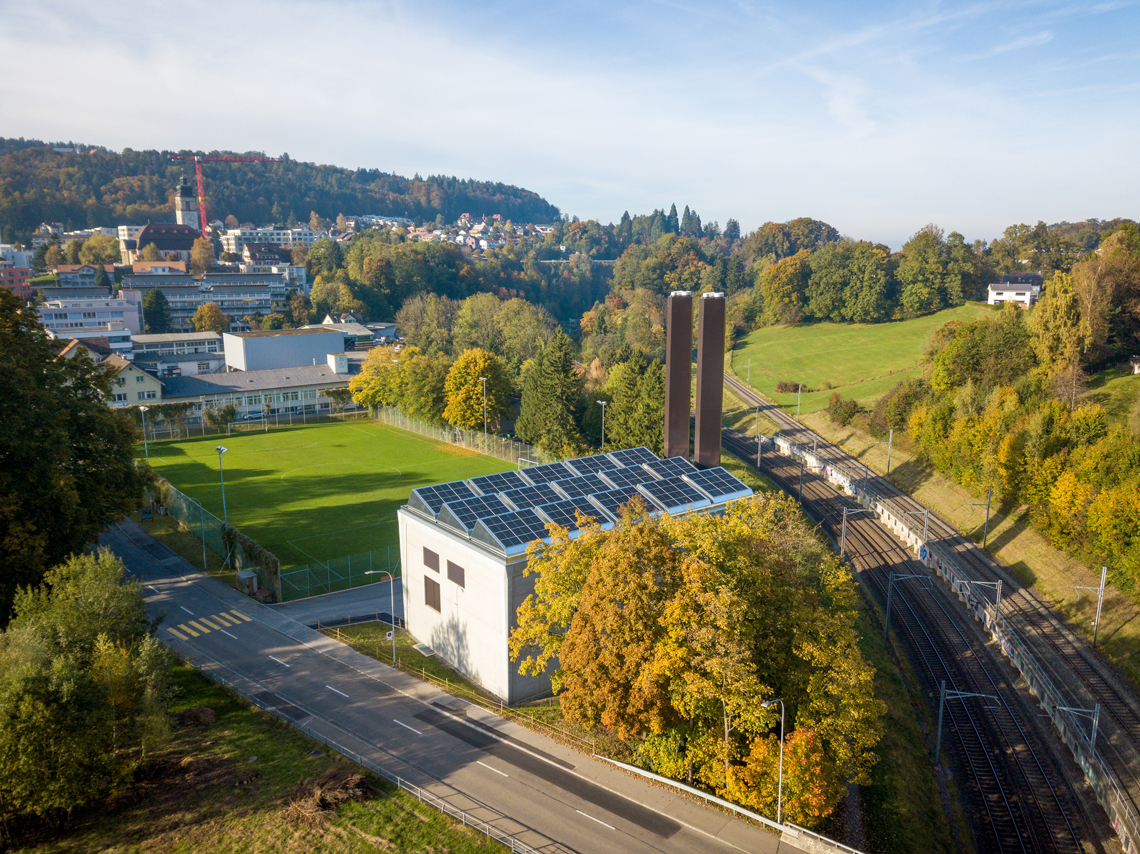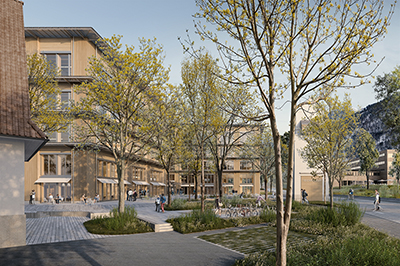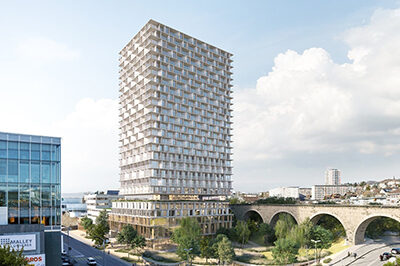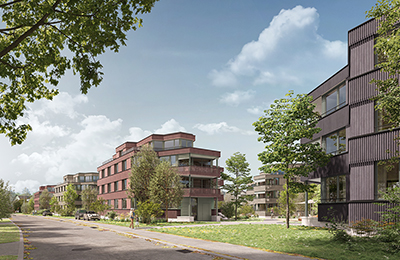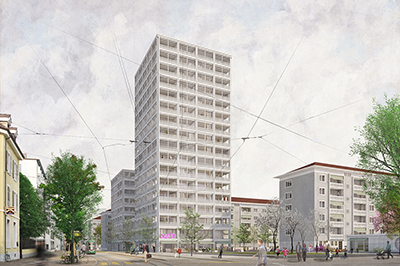
Lukasmühle district heating centre, St. Gall
| Client | Sankt Galler Stadtwerke, St. Gallen |
| Architects | Thomas K. Keller Architekten, St. Gallen |
| Planning | 2016-2018 |
| Execution | 2019-2021 |
| Construction cost | 22.5 Mio. CHF |
| Services | Structure and excavation: Design phase Tender documentation phase Execution phase |
| Photos | Beat Belser |
| Topics | Industry/tradeStructural steelworkConcrete constructionFair faced concrete |
The Lukasmühle district heating centre is the second centre to be built by the St. Gallen municipal services as part of the Energy Strategy 2050. It stands as a detached structure between Galgentobelweg and Lukasstrasse in St. Gallen. The external appearance of the new district heating centre resembles that of an industrial hall and the ground plan is rectangular. The hall-like building extends over a length of around 30.0 m, a width of around 18.0 m and a height above the ground of around 14.5 m.
The supporting structure is divided into single-span two-hinged cross frames at intervals of 6.0 m, infill frames along the façade surfaces, roof elements with square ground plan dimensions of 6.0/6.0 m and a basement. The transverse frames, longitudinal roof girders and the roof sheds as well as an internal wall and the inspection openings were made of prefabricated concrete elements in prefabricated construction, while the other main structural elements were made of in-situ concrete.
The staircase, the stairs and landings in the basement as well as the shoring in the boiler hall are steel constructions. The principle of steel construction is based on stacking the elements. Thus there is a basic framework and added load-bearing elements. This can be seen most impressively in the boiler hall: diagonal supports and primary beams form the basic framework, which transfers the loads selectively into the walls and ceilings. Subsequently, the platforms on the first level and the beams on the second level were added as secondary structures. In addition to a clear load transfer, it was possible to create a supporting structure that allows a flexible connection for all the built-in parts of the building services.


